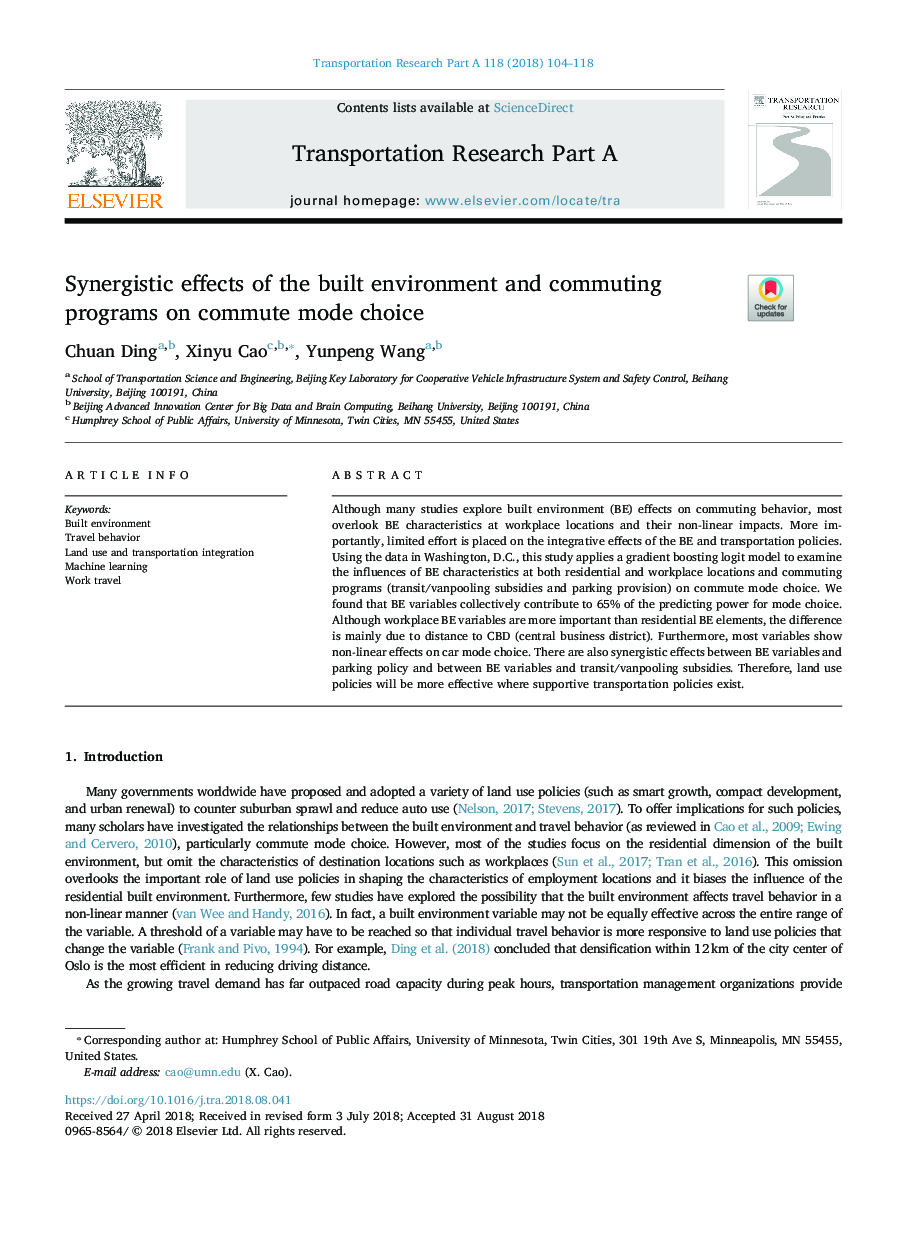| Article ID | Journal | Published Year | Pages | File Type |
|---|---|---|---|---|
| 10145874 | Transportation Research Part A: Policy and Practice | 2018 | 15 Pages |
Abstract
Although many studies explore built environment (BE) effects on commuting behavior, most overlook BE characteristics at workplace locations and their non-linear impacts. More importantly, limited effort is placed on the integrative effects of the BE and transportation policies. Using the data in Washington, D.C., this study applies a gradient boosting logit model to examine the influences of BE characteristics at both residential and workplace locations and commuting programs (transit/vanpooling subsidies and parking provision) on commute mode choice. We found that BE variables collectively contribute to 65% of the predicting power for mode choice. Although workplace BE variables are more important than residential BE elements, the difference is mainly due to distance to CBD (central business district). Furthermore, most variables show non-linear effects on car mode choice. There are also synergistic effects between BE variables and parking policy and between BE variables and transit/vanpooling subsidies. Therefore, land use policies will be more effective where supportive transportation policies exist.
Related Topics
Physical Sciences and Engineering
Engineering
Civil and Structural Engineering
Authors
Chuan Ding, Xinyu Cao, Yunpeng Wang,
